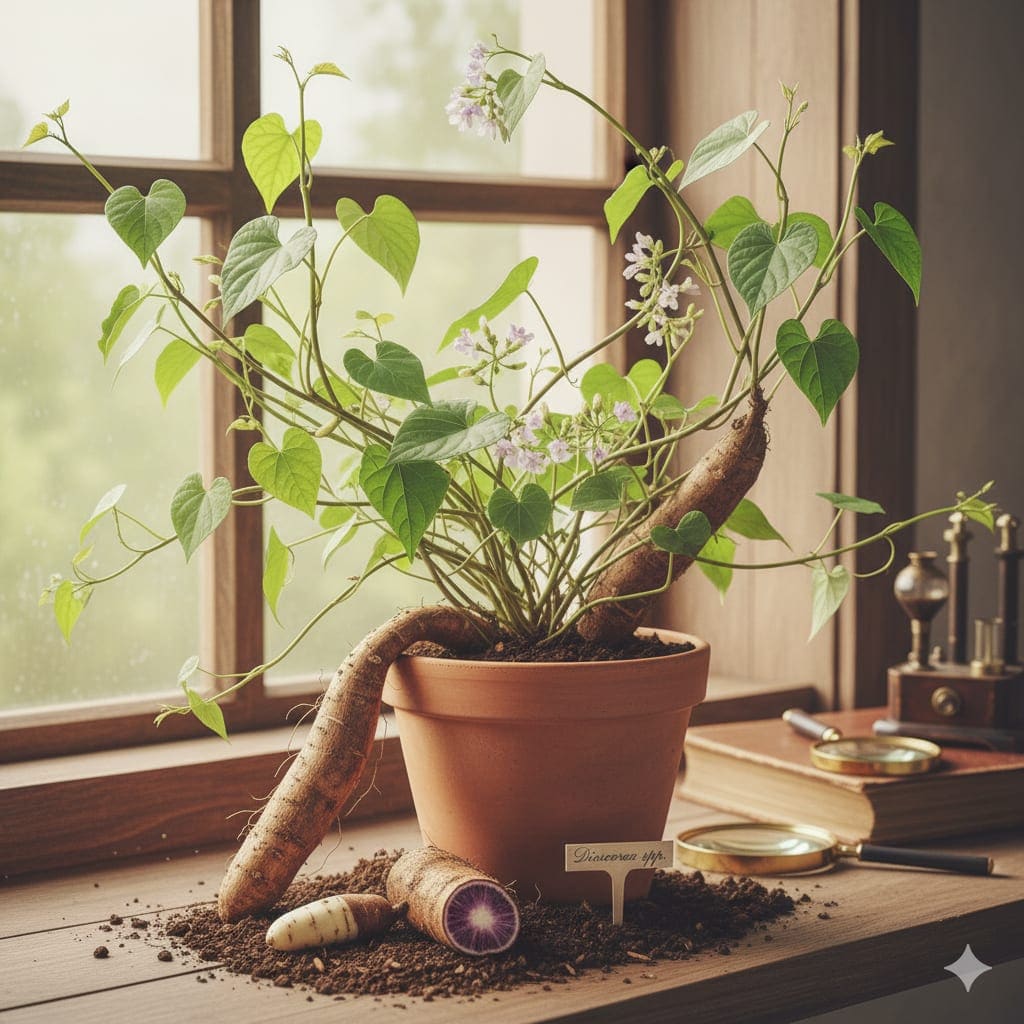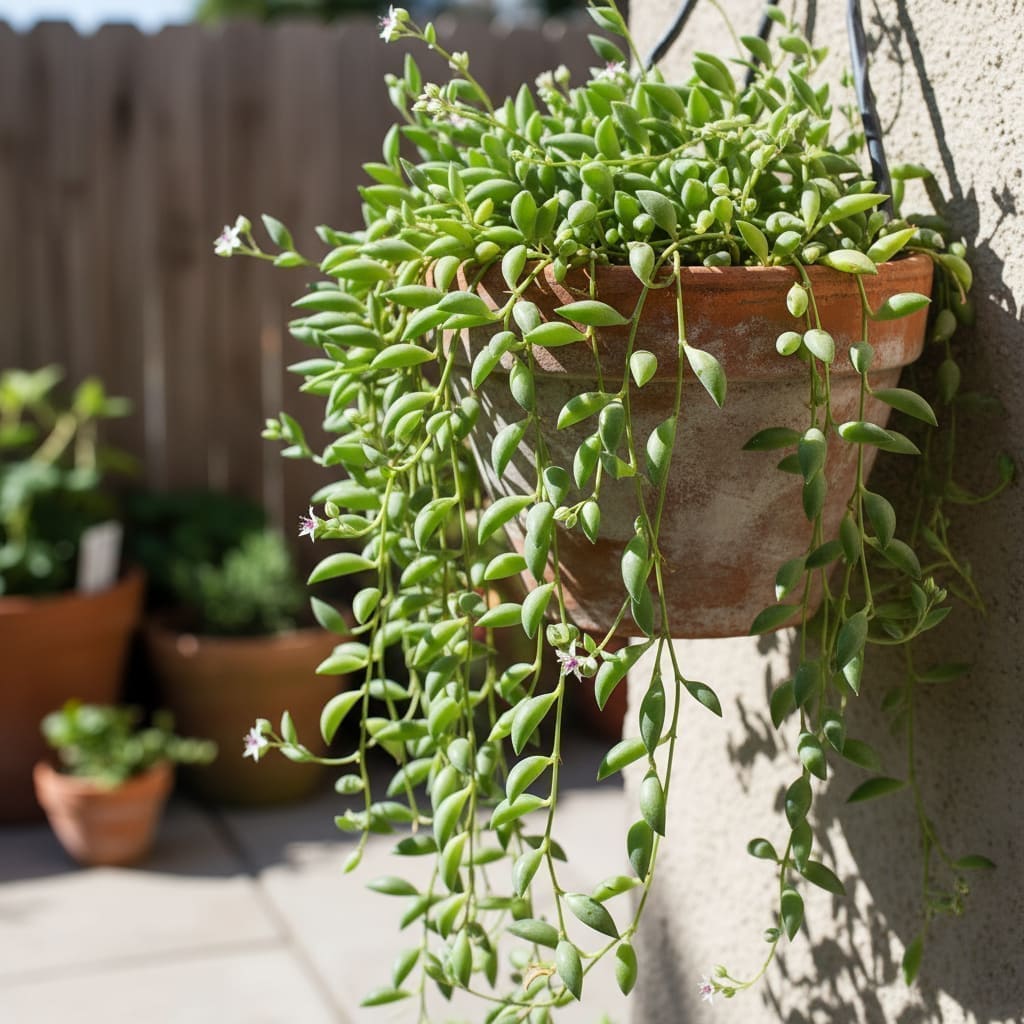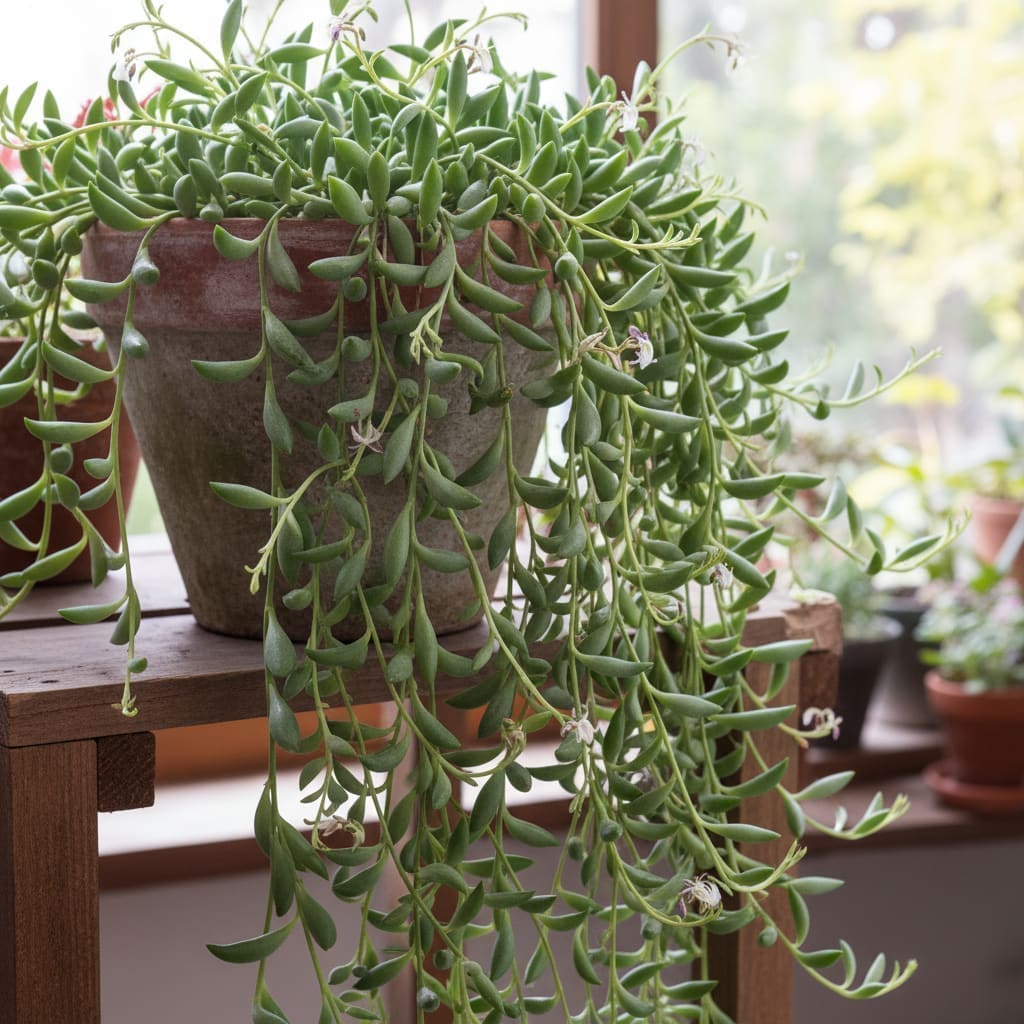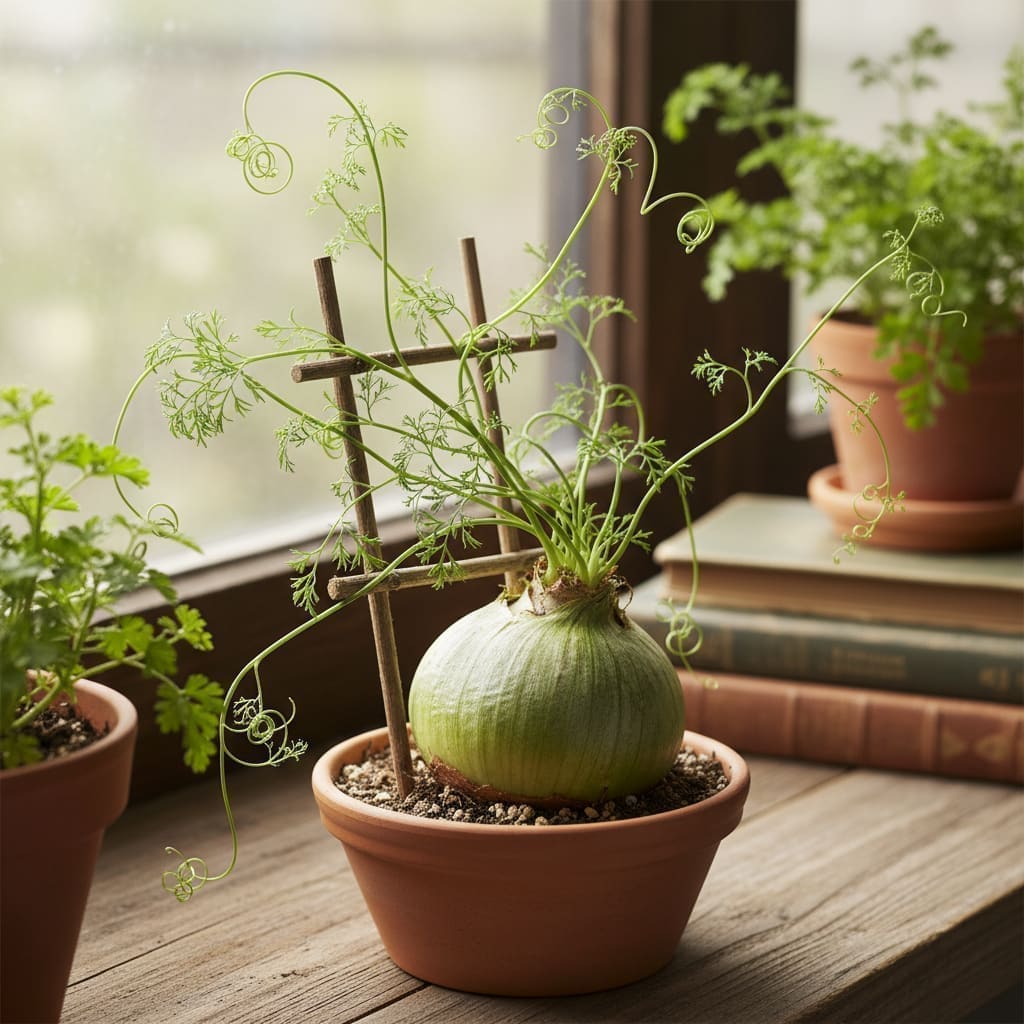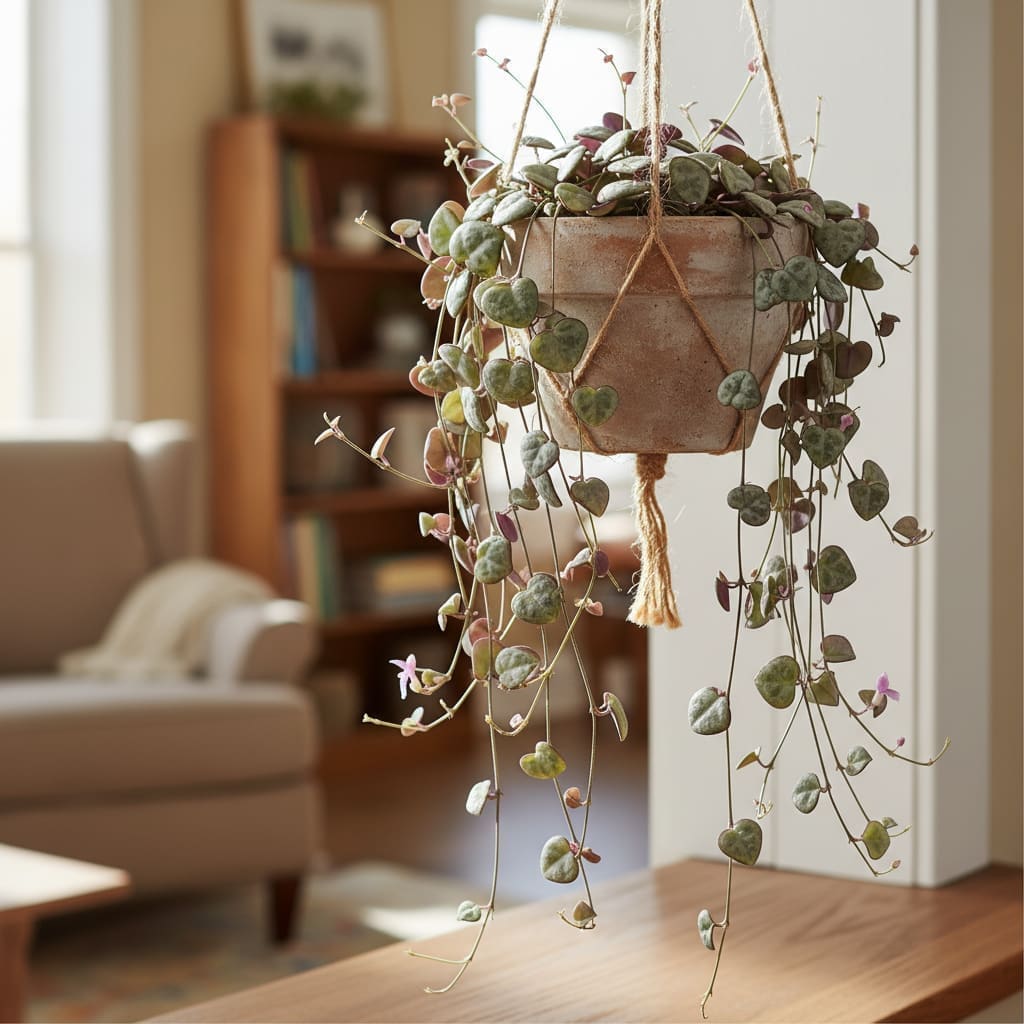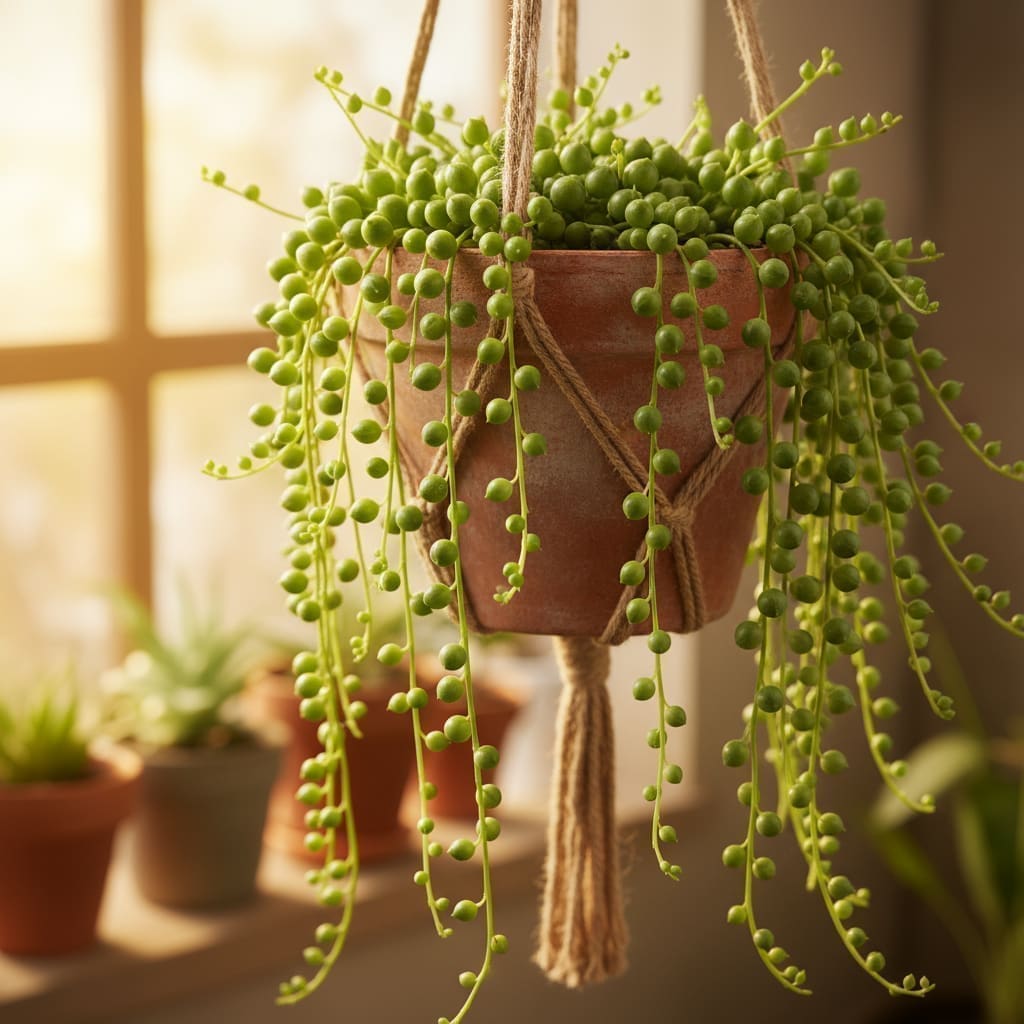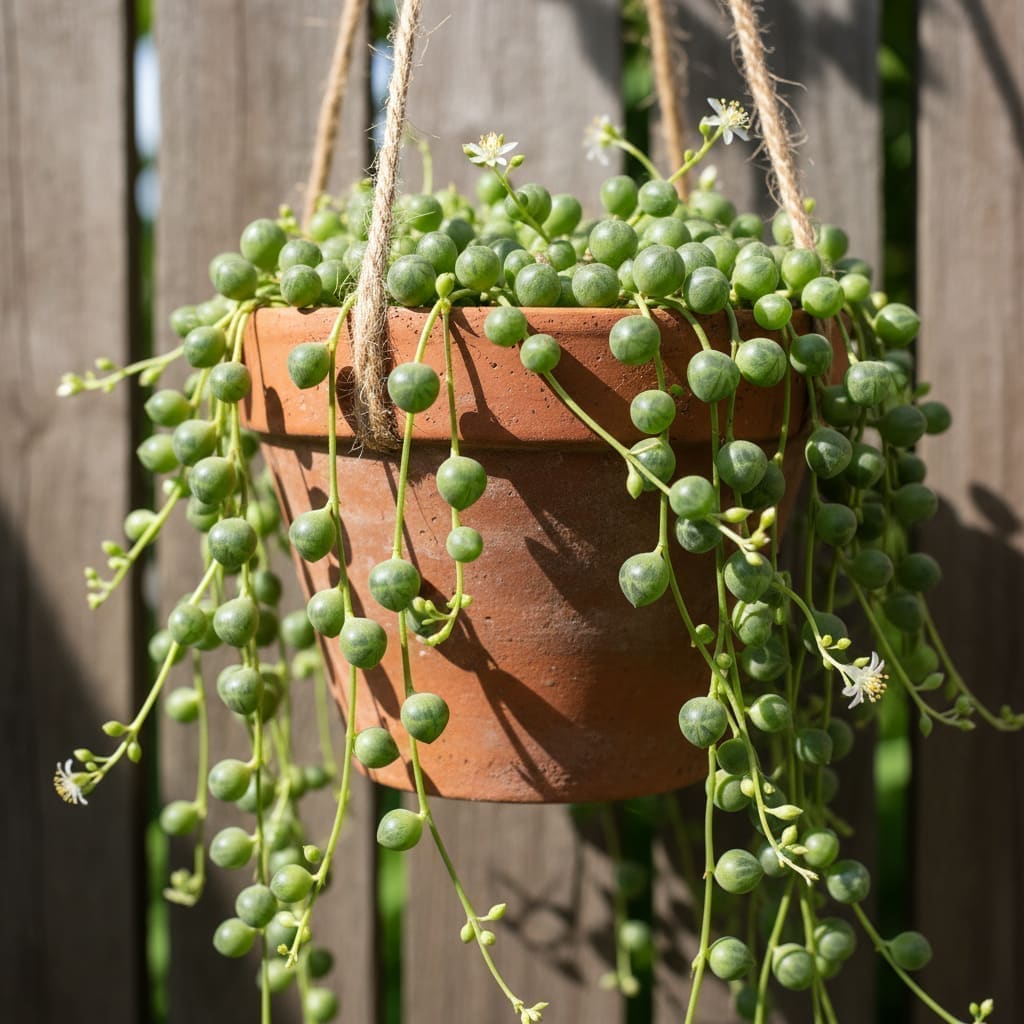Dioscorea elephantipes (Elephant’s Foot) Care & Growing Guide
Overview
Dioscorea elephantipes, commonly known as Elephant’s Foot, Turtle Back, or Hottentot Bread, is a unique caudiciform plant native to the arid regions of South Africa. Belonging to the yam family (Dioscoreaceae), it is prized for its distinctive, woody caudex that develops deep, geometric fissures resembling a turtle shell. This slow-growing perennial vine is adapted to dry climates and has a fascinating seasonal growth cycle, often producing foliage during cooler months and entering dormancy in the heat of summer.
Its combination of sculptural form and low water needs makes it a favorite among succulent collectors and indoor gardeners seeking unusual, conversation-starting plants.
Identification & Growth Habit
Dioscorea elephantipes grows from a large, rounded caudex that can reach over 1 meter in diameter in very old specimens. From this base, slender, twining vines emerge, bearing heart-shaped, green leaves. The plant is a climbing or trailing species, and in cultivation, it often benefits from support such as a trellis or moss pole.
The caudex serves as a water storage organ, enabling the plant to survive extended dry periods. Growth is typically seasonal, with foliage appearing in autumn or winter and dying back in late spring or early summer as the plant enters dormancy.
Light & Placement
- Provide bright, indirect light for optimal growth.
- Morning sun is generally tolerated and can enhance vigor.
- Avoid intense afternoon sun, which may scorch leaves.
- Indoors, place near an east- or south-facing window with filtered light.
Watering & Humidity
Watering should be minimal and carefully timed to the plant’s growth cycle:
- During active growth, water sparingly, allowing the soil to dry completely between waterings.
- In dormancy (often summer), reduce watering drastically—only give enough to prevent the caudex from shriveling.
- Average household humidity is sufficient; avoid overly humid locations.
Soil & Repotting
Use a well-draining soil mix to prevent root rot. A commercial cactus or succulent mix works well, ideally amended with coarse sand or perlite for extra drainage. The caudex should sit above the soil line to prevent rot and showcase its form.
Repotting is infrequent—only when the plant outgrows its container or soil becomes compacted. Handle the caudex gently during repotting.
Fertilizing
During the active growing season (spring and summer in some climates, winter in others depending on growth cycle), feed monthly with a diluted, balanced liquid fertilizer. Avoid fertilizing during dormancy, as the plant is not actively taking up nutrients.
Pruning & Training
Pruning is minimal and mainly involves removing dead or yellowing leaves and spent vines at the end of the growth season. The climbing vines can be trained on a small trellis, moss pole, or other support to encourage upward growth and prevent tangling. Alternatively, allow them to trail naturally for a more relaxed display.
Propagation
Dioscorea elephantipes is most reliably propagated from seed. Propagation from the caudex is generally not viable.
Step-by-Step Seed Propagation
- Obtain fresh seeds from a reputable source.
- Prepare a shallow tray or small pots with a well-draining succulent mix.
- Sow seeds on the surface and lightly cover with a thin layer of fine sand or grit.
- Moisten the soil gently and maintain consistent warmth (around 70–75°F / 21–24°C).
- Keep the medium slightly moist but never soggy until germination occurs (may take several weeks).
- Once seedlings develop, reduce watering frequency and provide bright, indirect light.
Common Problems
Pests
- Mealybugs: Look for white, cottony masses on stems and leaves. Treat with insecticidal soap or neem oil.
- Spider mites: Fine webbing and stippled leaves may indicate infestation. Increase air circulation and treat with miticide if necessary.
Diseases
- Root rot: Caused by overwatering or poorly draining soil. Prevent by allowing soil to dry completely between waterings and using a gritty mix.
Toxicity & Pet Safety
Dioscorea elephantipes is considered toxic if ingested. Keep out of reach of pets and children. Ingestion may cause gastrointestinal distress in animals and humans.
Styling & Decor Tips
- Showcase the caudex in a shallow, wide pot to highlight its sculptural form.
- Use minimalist or natural containers to complement its textured surface.
- Position where both caudex and climbing vines are visible—on a shelf, plant stand, or low table near a bright window.
Varieties & Cultivars
There are no widely recognized cultivars of Dioscorea elephantipes, but individual plants vary in caudex shape, fissure pattern, and vine vigor. These variations make each specimen unique.
Buying Tips & Maturity
- Choose plants with a firm, unblemished caudex and healthy, pest-free foliage (if in growth).
- Be aware that young plants may have a smoother caudex that develops deeper fissures with age.
- Mature specimens are slow-growing and can be decades old; younger plants are more affordable and adapt well to new environments.
Seasonal Care
- Autumn/Winter: Often the active growth period; increase watering slightly and provide bright light.
- Spring/Summer: Dormancy for many specimens; reduce watering to minimal levels and avoid fertilizing.
- Adjust care based on your plant’s observed growth cycle, as timing can vary in cultivation.
FAQ
- Q: How fast does Dioscorea elephantipes grow?
A: It is a very slow-growing plant; the caudex enlarges gradually over many years. - Q: Can I grow it outdoors?
A: Yes, in frost-free climates with bright, indirect light and excellent drainage. Protect from temperatures below 50°F (10°C). - Q: Why are the leaves yellowing?
A: Yellowing may indicate overwatering, seasonal dormancy, or natural leaf aging. - Q: Does it need a large pot?
A: No, a pot just slightly larger than the caudex is sufficient; too much soil can retain excess moisture. - Q: How long can it live?
A: With proper care, specimens can live for many decades, even over a century in ideal conditions.
Source: Wikipedia – Dioscorea elephantipes
Troubleshooting Scenarios
- Wrinkled caudex during growth season: Indicates underwatering; gradually increase watering frequency while ensuring drainage.
- Soft caudex: May signal rot—remove from pot, inspect roots, trim affected tissue, and replant in fresh, dry mix.
- Vines not emerging in expected season: Check for environmental triggers such as temperature shifts or insufficient light; adjust placement and monitor for pests.
Advanced Pruning & Training
For a more architectural display, selectively prune lateral shoots to emphasize vertical vine growth. Use soft plant ties to guide stems along geometric trellises or driftwood pieces for a sculptural effect. In multi-vine specimens, stagger training directions to create layered depth without overcrowding the caudex base.
Companion Planting Ideas
- Haworthia – shares similar low-water requirements and contrasts with its rosette form.
- Senecio rowleyanus (String of Pearls) – offers trailing texture beneath the climbing vines.
- Gasteria – tolerates similar light and adds bold, strap-like foliage.
Do & Don't List
- Do rotate the pot periodically for even vine growth.
- Do monitor seasonal changes closely to match care to growth phase.
- Don't bury the caudex under soil or mulch.
- Don't place in consistently damp environments, which encourage fungal issues.
Seasonal Care Calendar (Example for Northern Hemisphere)
- September–February: Active growth; water lightly every 10–14 days, fertilize monthly.
- March–April: Transition; reduce water gradually as foliage yellows.
- May–August: Dormancy; minimal water, bright but cooler location preferred.
